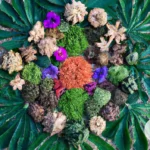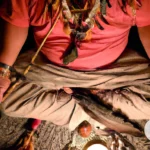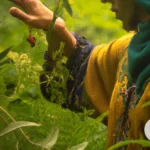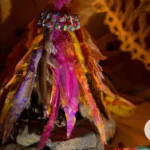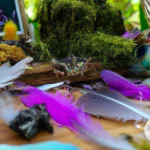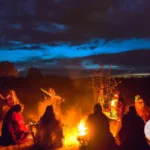Ayahuasca is a powerful plant medicine that has been used by indigenous communities in the Amazon for centuries for its healing and spiritual properties. In recent years, however, there has been a growing trend of Westerners seeking out ayahuasca retreats, often without fully understanding the cultural and spiritual significance of the practice. This trend has raised concerns about cultural appropriation and the ethical implications of Westerners using a sacred Indigenous tradition for personal gain. In this article, we will explore the history of ayahuasca, the issues surrounding Western appropriation, and provide guidance on how to approach ayahuasca ceremonies with respect and integrity.
What is Ayahuasca?
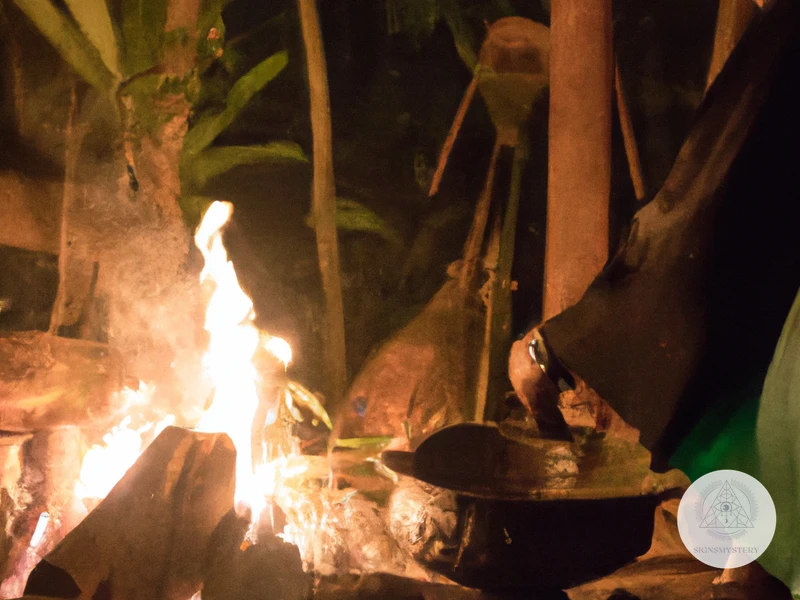
Ayahuasca is a powerful psychedelic brew that has been used for centuries by indigenous communities in the Amazon basin for spiritual and medicinal purposes. It is typically made from brewing the Banisteriopsis caapi vine and other plants, which contains the psychoactive compound DMT. The experience of drinking ayahuasca can be intense and transformative, often described as a journey into the depths of one’s consciousness. The use of ayahuasca has gained popularity among Westerners seeking spiritual and personal growth in recent years, but it is important to approach it with respect and understanding of its cultural and traditional roots. To learn more about the traditional use of ayahuasca by indigenous cultures, visit this link.
Traditional Use by Indigenous Communities
Ayahuasca has been used for spiritual and medicinal purposes by indigenous communities in the Amazon basin for centuries. It is considered a sacred plant that is used in shamanic rituals that aim to promote healing, gain insight, and connect with the spiritual realm. The indigenous people use Ayahuasca in a controlled and structured environment with a designated leader or shaman who has years of training and experience.
The Ayahuasca ceremony is a revered tradition that is respected by the indigenous communities and is passed down from generation to generation. The ceremony is considered a sacred time for reflection and healing, and one that should be approached with humility and respect. It is important to understand that this practice is deeply rooted in the indigenous culture and holds deep spiritual significance.
For the indigenous people, Ayahuasca is not a recreational substance, but a tool for spiritual healing. The ceremony is guided by a shaman who serves as a conduit between the physical world and the spiritual realm. They help those participating in the ceremony to navigate the spiritual experience and keep them safe throughout the process.
It is essential to acknowledge that the use of Ayahuasca by indigenous communities is not the same as the way it is used in the west. The traditional use of Ayahuasca is complex and deeply ingrained in the indigenous culture, and attention must be paid to respect and honor this practice. There is a need for appropriate education and preparation before considering participating in an Ayahuasca ceremony and the need to choose a center that is culturally respectful and values the tradition.
A shaman is an integral part of an Ayahuasca ceremony and has a deep understanding of the plant and its effects. In many cases, the indigenous communities use Ayahuasca as a tool for physical, emotional, and spiritual healing. It is not merely a recreational activity, and it is crucial to understand and honor the tradition that has been passed down over many generations.
Western Appropriation of Ayahuasca
The Western appropriation of Ayahuasca has been a topic of ethical concern in recent years. Ayahuasca, a powerful hallucinogenic plant mixture, has been used traditionally by indigenous communities in South America for centuries in sacred ceremonies for healing and spiritual purposes. However, as interest in Ayahuasca has grown, Westerners have increasingly participated in ceremonies, often without fully understanding the cultural significance and traditions surrounding the practice. This has led to instances of cultural appropriation, such as the commercialization of Ayahuasca retreats and the exploitation of indigenous peoples. It’s important for Westerners to approach the use of Ayahuasca with respect and understanding, and to educate themselves on the proper preparation and etiquette for participating in a ceremony.
Examples of Cultural Appropriation
Cultural appropriation occurs when an individual or group from a dominant culture adopts elements from a culture of a marginalized group without proper understanding and respect for its significance. In the context of Ayahuasca, cultural appropriation can have negative consequences for the indigenous communities of the Amazon who have used this plant medicine for spiritual purposes for generations.
Some examples of cultural appropriation of Ayahuasca include:
| Examples | Explanation |
|---|---|
| Ayahuasca tourism | Some retreat centers offer Ayahuasca ceremonies to tourists without regard for the cultural and spiritual significance of the practice. This can be disrespectful to the indigenous communities of the Amazon who have used Ayahuasca in traditional settings for centuries. |
| Commercialization of Ayahuasca | There is a growing market for Ayahuasca-related products, such as clothing and artwork, that are designed for the Western market. This can lead to cultural commodification and disrespect for the traditions that have been built around Ayahuasca. |
| Non-traditional use of Ayahuasca | Some people use Ayahuasca for non-traditional purposes, such as to enhance creativity or to experience a recreational high. This can be seen as disrespectful to the indigenous communities who consider Ayahuasca as a sacred plant medicine that is used in a specific spiritual context. |
It’s important to remember that cultural appropriation is a complex issue with many nuances, and not all instances of cultural sharing may be harmful. However, in the case of Ayahuasca, it’s essential to approach the plant medicine with respect and appreciation for its cultural and spiritual significance.
Ethical Concerns
The issue of cultural appropriation arises when individuals or groups adopt elements of a culture that is not their own, without proper understanding or respect for its origins. Ayahuasca is a sacred plant that has been used for centuries in indigenous communities for spiritual and healing purposes. However, due to the growing popularity of ayahuasca ceremonies in Western countries, the issue of appropriation has become a concern among indigenous communities and researchers.
One example of cultural appropriation is the commercialization of ayahuasca ceremonies and retreats, with some Western retreat centers charging exorbitant fees for participation. This commodification of a sacred indigenous tradition is seen as exploitative and disrespectful. Additionally, there has been a growing trend of self-proclaimed “shamans” offering ayahuasca ceremonies without proper training or respect for the tradition.
Another ethical concern is the lack of respect for the legal status of ayahuasca. While ayahuasca is legal in some countries, it is a controlled substance in others, and its use and possession can result in legal consequences. Despite this, some individuals continue to participate in ayahuasca ceremonies without regard for the legal ramifications.
It is important for individuals to be aware of these ethical concerns and to approach ayahuasca with respect and understanding. As the popularity of ayahuasca and other plant medicines grows, it is crucial to continue the conversation about cultural appropriation and to ensure that this sacred tradition is respected, protected, and used ethically.
If you are considering participating in an ayahuasca ceremony, it is essential to do your research and choose a retreat center that is grounded in respect for indigenous cultures and traditions. It is also important to prepare for the ceremony properly, both physically and mentally. Understanding the risks and benefits of ayahuasca is also crucial in making an informed decision about participation.
Preparing for Ceremony
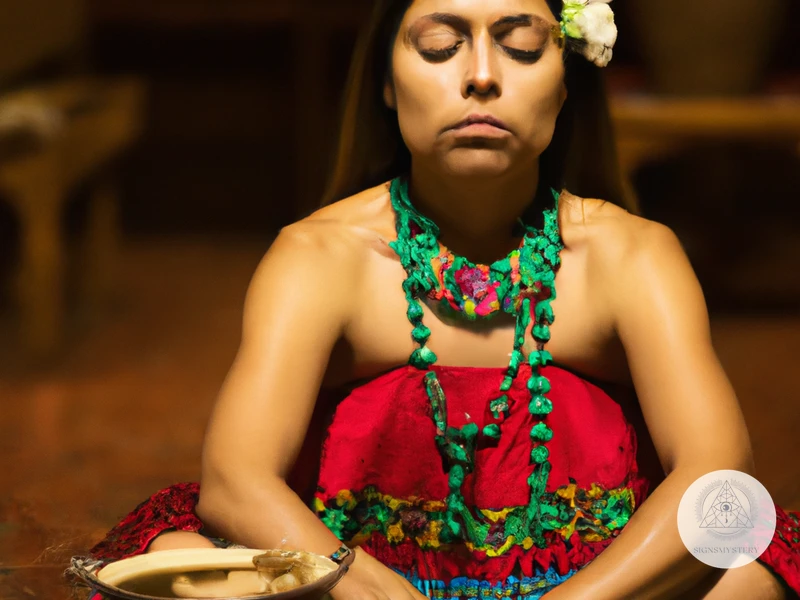
Preparing for an ayahuasca ceremony can be a daunting task, especially for those who have never experienced the plant medicine before. Research and education are crucial in understanding what to expect during the ceremony and how to properly prepare for it. It’s important to choose a reputable retreat center that aligns with your values, where you will feel safe and comfortable to fully immerse in the experience. Choosing a retreat center that has experienced and trained facilitators and shamans is key to having a positive and transformative ayahuasca experience. It’s also recommended to follow a diet in the weeks leading up to the ceremony and to abstain from alcohol, drugs, and sexual activity, as these can affect the effectiveness of the medicine. Lastly, it’s important to approach ayahuasca ceremony with respect and humility. By doing so, one can fully honor the tradition and openness to the potential benefits of ayahuasca spiritual healing.
Research and Education
Before attending an ayahuasca ceremony, it is essential to conduct thorough research and education to understand the history, culture, and significance of the ceremony. Westerners need to approach the indigenous tradition of ayahuasca with respect and a willingness to learn.
There is plenty of literature, research, and documentary films about ayahuasca available online, and reading and watching a variety of sources can be an excellent way to prepare for an ayahuasca ceremony. It is also important to learn about the potential risks and benefits of ayahuasca and to ensure that you are physically, mentally, and emotionally ready for the experience.
Attending a ceremony with a reputable ayahuasca shaman or facilitator who can provide more extensive education and guidance is also recommended. Some retreat centers provide workshops and meetings prior to the ceremony to familiarize participants with the process and prepare them mentally and emotionally.
Here is a table summarizing the research and education process for attending an ayahuasca ceremony:
| Research and Education for Ayahuasca Ceremony |
| – Learn about the history and cultural significance of ayahuasca |
| – Read a variety of literature and watch documentaries |
| – Understand the potential risks and benefits of ayahuasca |
| – Ensure that you are physically, mentally, and emotionally ready for the experience |
| – Attend workshops and meetings with ayahuasca shamans or facilitators |
Proper research and education help establish a respectful and positive connection with the indigenous culture and ayahuasca tradition. It also enhances the benefits of the ayahuasca experience and helps avoid potential negative outcomes.
Choosing a Retreat Center
When choosing a retreat center for an ayahuasca ceremony, there are several factors to consider that can affect the safety, legality, and cultural appropriateness of the experience. One of the first things to look for is a center that operates legally and is licensed to provide ayahuasca ceremonies. This can help ensure that the center is following appropriate safety protocols and that you are participating in a legal and ethical ceremony.
Beyond legality, it’s also important to consider the reputation and experience of the retreat center. Look for information about the center’s history, the qualifications of its facilitators and shamans, and the experiences of people who have attended ceremonies there in the past. This can help you get a sense of whether the center is reputable, trustworthy, and able to provide a safe and respectful ayahuasca experience.
It’s also important to consider the setting and accommodations offered by the retreat center. Look for a center that provides a comfortable and supportive environment that can help you feel safe and relaxed during your ceremony. This may include things like private rooms, comfortable bedding, nutritious food, and access to nature, such as gardens or walking trails.
Ultimately, the key is to do your research and choose a retreat center that aligns with your personal values and intentions for working with ayahuasca. Take the time to read reviews, investigate the center’s reputation and legality, and talk to past participants or facilitators to get a sense of what the experience is like. By doing so, you can help ensure a safe, meaningful, and transformative experience with this powerful plant medicine.
Respect and Integration
Respect and integration play a crucial role in the Ayahuasca experience. It is important to show respect to the culture and tradition from which Ayahuasca originates. One way to do this is by showing reverence towards the shaman, who is considered to be the spiritual leader for the ceremony. It is also essential to respect the rules and guidelines set by the retreat center or the shaman leading the ceremony. Integrating the experience into one’s daily life is vital for personal growth and understanding. This involves taking time for self-reflection, journaling, meditation, and making necessary changes in one’s behavior and mindset. An Ayahuasca ceremony preparation can help one to be more aware and receptive to the experience. It’s important to recognize Ayahuasca’s legal status in your country or state before consuming. Finally, each person’s personal ayahuasca experience is unique, so it’s essential to approach the plant medicine with an open mind and heart.
Showing Respect to the Culture and Tradition
Showing respect to the culture and tradition is crucial when participating in an Ayahuasca ceremony. Here are some ways to honor and respect the indigenous culture and tradition:
| 1. Follow the guidelines and rules set by the retreat center and Shamans. This includes following the dress code, participating in the ceremonies, and staying within the retreat center boundaries. |
| 2. Do not take photos or videos during the ceremony, as this is considered disrespectful to the sacred experience and the privacy of other participants. |
| 3. Avoid using disrespectful cultural appropriation, such as wearing headdresses or other traditional items without proper understanding and permission. |
4. Understand and respect the role of the Shaman, their traditions, and theSubscribe to Our NewsletterSign up to receive the latest news and updates. |
| 5. Approach the ceremony with an open mind and a willingness to learn and be respectful towards the culture and tradition, even if it may be unfamiliar or uncomfortable at times. |
Showing respect to the culture and tradition is the key to having a positive and meaningful experience with Ayahuasca. It helps to ensure that the indigenous culture and tradition are honored and preserved, and that the participants are able to integrate the transformative experiences into their lives.
Integrating Ceremony Experience
Integrating the ayahuasca ceremony experience is an important aspect of the process. It’s crucial to take time after the ceremony to process and reflect on the experience. Here are some tips for integrating the ceremony experience:
| Journaling: | Writing down your experience in a journal can be a helpful way to reflect on the ayahuasca ceremony. You can write down your insights, emotions, and any important details that you want to remember. |
| Meditation: | A regular meditation practice can help you integrate the ayahuasca experience. Meditation can help you connect with your inner self and bring clarity to your thoughts and emotions. It can also help you develop a deeper understanding of your personal journey and how the ceremony fits into your life. |
| Talking to others: | Talking to others about your experience can be helpful. You may want to share your experience with friends or family who have also participated in similar ceremonies. You can also seek out support groups or online forums where you can connect with others who have had similar experiences. |
| Integration coaching: | Working with an integration coach can be an effective way to integrate the ayahuasca experience. An integration coach can help you process and interpret your experience and provide guidance on how to incorporate the lessons you learned into your daily life. |
It’s important to remember that the ayahuasca experience can be profound and transformative, but integration is an ongoing process that can take time. Patience, self-compassion, and a willingness to explore the lessons learned are key to successful integration.
Creating a Safer and Respectful Ceremony
Creating a safer and respectful ceremony is crucial to avoid causing harm or perpetrating cultural appropriation. One important aspect is to dress appropriately. It is recommended to wear loose-fitting, comfortable clothing made from natural materials. Wearing strong scents or heavy perfumes should also be avoided as they can disrupt the ceremony. During the ceremony, it is important to show respect to the shaman, traditional practices, and other participants. Talking, laughing, or using electronic devices should be refrained from, as it can disturb the energy and overall experience. It is also important to work with a qualified shaman or healer who understands the traditional use and cultural significance of ayahuasca. By following these guidelines, one can create a safer and more respectful environment for the ayahuasca ceremony.
Proper Attire and Behavior
When attending an Ayahuasca ceremony, it’s important to dress appropriately and behave in a respectful manner. Here are some tips to ensure that you’re creating a safer and more respectful ceremony:
| Proper Attire | Proper Behavior |
|---|---|
|
|
These guidelines will help you and the other participants to stay focused on the ceremony and channel the energies required to get the most out of the experience. Remember, Ayahuasca ceremonies are deeply spiritual events and the key to having a meaningful ceremony is to respect the ceremony and the culture, trust your shaman, and fully immerse yourself in the experience.
Working with Shamans and Healers
Working with shamans and healers can greatly enhance the safety and effectiveness of an ayahuasca ceremony. It is important to respectfully incorporate their guidance and expertise, as they have years of experience working with the plant medicine. Here are a few ways to ensure a safe and respectful collaboration with shamans and healers:
| 1. Communication | Clear communication with the shaman/healer is key. Make sure to discuss any medical conditions or medications you are taking before the ceremony. This will help the shaman or healer tailor the experience to your specific needs. |
| 2. Trust | Trust is an important aspect of working with a shaman or healer. It is crucial to find someone who you feel comfortable with and trust their experience and expertise. |
| 3. Follow their guidance | Shamans and healers are there to guide and support you through the experience. It is important to trust their guidance and follow their instructions, as they have a deep understanding of the plant medicine and how it interacts with the body and mind. |
| 4. Respect their traditions | Shamans and healers come from different cultural backgrounds and have their own set of traditions and beliefs. It is important to show respect and appreciation for their culture, and ask for permission before participating in any rituals or practices. |
| 5. Gratitude and reciprocity | After the ceremony, it is customary to express gratitude to the shaman or healer for their guidance and support. This can be done through a simple thank you, a small gift, or an act of service. It is also important to offer reciprocity, such as making a donation to their community or supporting their work in some other way. |
By working with shamans and healers in a respectful and collaborative manner, participants can enhance their ayahuasca experience and feel supported throughout the journey. It is important to remember that the plant medicine is a powerful tool that should be approached with care and caution, and working with experienced shamans and healers can help ensure a safe and transformative journey.
Conclusion
Conclusion:
In conclusion, the topic of cultural appropriation and the use of ayahuasca by Westerners is a complex issue that must be approached with sensitivity and respect. While ayahuasca can offer profound healing benefits, it is important to recognize the cultural significance and traditional use of this medicine by indigenous communities.
To avoid contributing to cultural appropriation, it is crucial to approach ayahuasca ceremony with a focus on education, respect, and integration. Potential participants should conduct thorough research and carefully choose a retreat center that honors the traditions and practices of the indigenous cultures from which ayahuasca originates.
During ceremony, it is essential to show respect for the sacredness of the practice, work with experienced shamans and healers, and integrate the ceremony experience into daily life in a responsible and respectful way.
By following these guidelines, Westerners can create a safer, more respectful, and more culturally sensitive approach to using ayahuasca. It is our responsibility to ensure that we do not exploit or disrespect indigenous cultures and traditions, but instead approach this powerful medicine with humility and gratitude.
Frequently Asked Questions
What is the purpose of a traditional Ayahuasca ceremony?
The purpose of a traditional Ayahuasca ceremony is to connect with a higher spiritual power and gain insight and healing from the plants.
Why do Westerners appropriate Ayahuasca?
Westerners appropriate Ayahuasca for a variety of reasons, often to seek spiritual experiences, personal growth, or healing.
What are some examples of cultural appropriation of Ayahuasca?
Examples of cultural appropriation include the commercialization of Ayahuasca ceremonies, the use of the plant outside of its traditional cultural context, and the exploitation of indigenous knowledge and practices.
What are some ethical concerns with Western appropriation of Ayahuasca?
Ethical concerns include the potential for disrespecting indigenous cultures and traditions, exploitation of vulnerable communities, and harm to individuals from unregulated or unethical practices.
How should one prepare for an Ayahuasca ceremony?
Preparation should involve research and education on the cultural context and traditions of Ayahuasca, choosing a reputable and responsible retreat center, and following recommended dietary and lifestyle guidelines.
How can one show respect to the culture and tradition of Ayahuasca?
One can show respect by approaching the practice with humility, acknowledging the cultural origins and significance of Ayahuasca, and following the guidance of experienced indigenous practitioners and healers.
How can one integrate their Ayahuasca experience after the ceremony?
Integration involves processing and reflecting on the insights gained during the ceremony, making necessary lifestyle changes, and seeking support from a therapist or trusted community if needed.
What should one wear and how should one behave during an Ayahuasca ceremony?
Attire should be modest and comfortable, and behaviors should reflect reverence and respect for the practice and participants. Talking or disrupting the ceremony is generally discouraged.
How does working with a shaman or healer affect the safety and respectfulness of an Ayahuasca ceremony?
Working with an experienced and reputable shaman or healer can help ensure the safety and respectfulness of the ceremony by providing guidance, protection, and cultural context.
What are the key takeaways regarding the ethical concerns and cultural appropriation of Ayahuasca?
The key takeaways are to approach Ayahuasca with respect and humility, educate oneself on the cultural context and traditions, choose reputable practitioners and retreat centers, and engage in responsible and ethical practices to avoid disrespect and exploitation.



